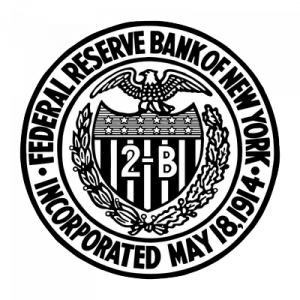 The New York Fed Governor signaled his support for so-called “floor system” of monetary policy.
The New York Fed Governor signaled his support for so-called “floor system” of monetary policy.
William Dudley was speaking at Lehman College in New York City in a speech entitled Important Choices for the Federal Reserve in the Years Ahead.
During this speech, he signaled his support for a floor system of monetary policy.
“Over the longer term, the FOMC will also need to address a number of other important issues. These include: 1) Determining the appropriate long-term implementation framework for U.S. monetary policy, and 2) deciding whether the strategic framework underlying monetary policy decisions needs to be adjusted to mitigate the risks associated with getting pinned at the effective lower bound for short-term interest rates.
“For the first issue, I see two options: return to the “corridor”-type system that was in place prior to the financial crisis or remain with the framework that has been in place since the crisis—namely, a ‘floor’ system. In a corridor system, reserves in the banking system are scarce, and the federal funds rate is set by adjusting the supply of reserves through open market operations to balance demand and supply at the FOMC’s target range. In contrast, in a floor system, reserves are abundant, so that the interest rate the Federal Reserve pays on excess reserves, or IOER, is the primary tool used to control the federal funds rate.
“In my view, the case for retaining the current floor system is very compelling for a number of reasons. First, it is operationally much less complex than a corridor system. In the current regime, the setting of IOER is largely sufficient to maintain the federal funds rate within the FOMC’s target range, as we have seen over the past few years. In contrast, a corridor system requires forecasting the many exogenous factors that affect the amount of bank reserves outstanding, and then engaging in open market operations on a near daily basis to keep reserves at a level consistent with the FOMC’s target range. This task would likely be more difficult now because of greater fluctuation in these exogenous factors relative to when the corridor regime was last in place.
“Second, a corridor system constrains the Federal Reserve’s ability to provide the types of lender-of-last-resort backstops that can help support financial stability.”
Banks are often trading assets with the Federal Reserve, Dudley noted. Often, those trades involve assets which count differently against reserves, and he believes the floor system provides more flexibility.

“The initial auctions of the Term Auction Facility, or TAF, were kept relatively small, in part, because of concerns that larger programs would make it more difficult for the manager of the System Open Market Account (me, in that particular case) to drain sufficient reserves to offset the TAF reserve additions. Similarly, the Term Securities Lending Facility (TSLF)—which involved the swap of Treasury collateral from the Federal Reserve against lower-quality collateral held by primary dealers—was introduced in large part because collateral swaps, unlike cash loans, did not affect the amount of reserves in the banking system. My overall point is that broad-based, open-ended lender-of-last-resort facilities are more difficult to accommodate in a corridor system because of the need to drain any reserve additions to keep the federal funds rate close to the FOMC’s target.”
Banks, especially since the implementation of Basel, have all sorts of requirements for capital reserves, with certain assets being treated differently.
Dudley said the corridor system doesn’t provide enough flexibility to make these trades.
Dudley noted later that the predominant view among the Federal Reserve aligns with his, though no final decision has been made.
“Although the FOMC has not made a final decision about a future framework for implementing monetary policy, meeting minutes confirm that participants recognize the advantages of a floor system. As the November 2016 FOMC minutes note: ‘Meeting participants commented on the advantages of using an approach to policy implementation in which active management of the supply of reserves would not be required….[S]uch an approach was seen as likely to be relatively simple and efficient to administer, relatively straightforward to communicate, and effective in enabling interest rate control across a wide range of circumstances.’”









